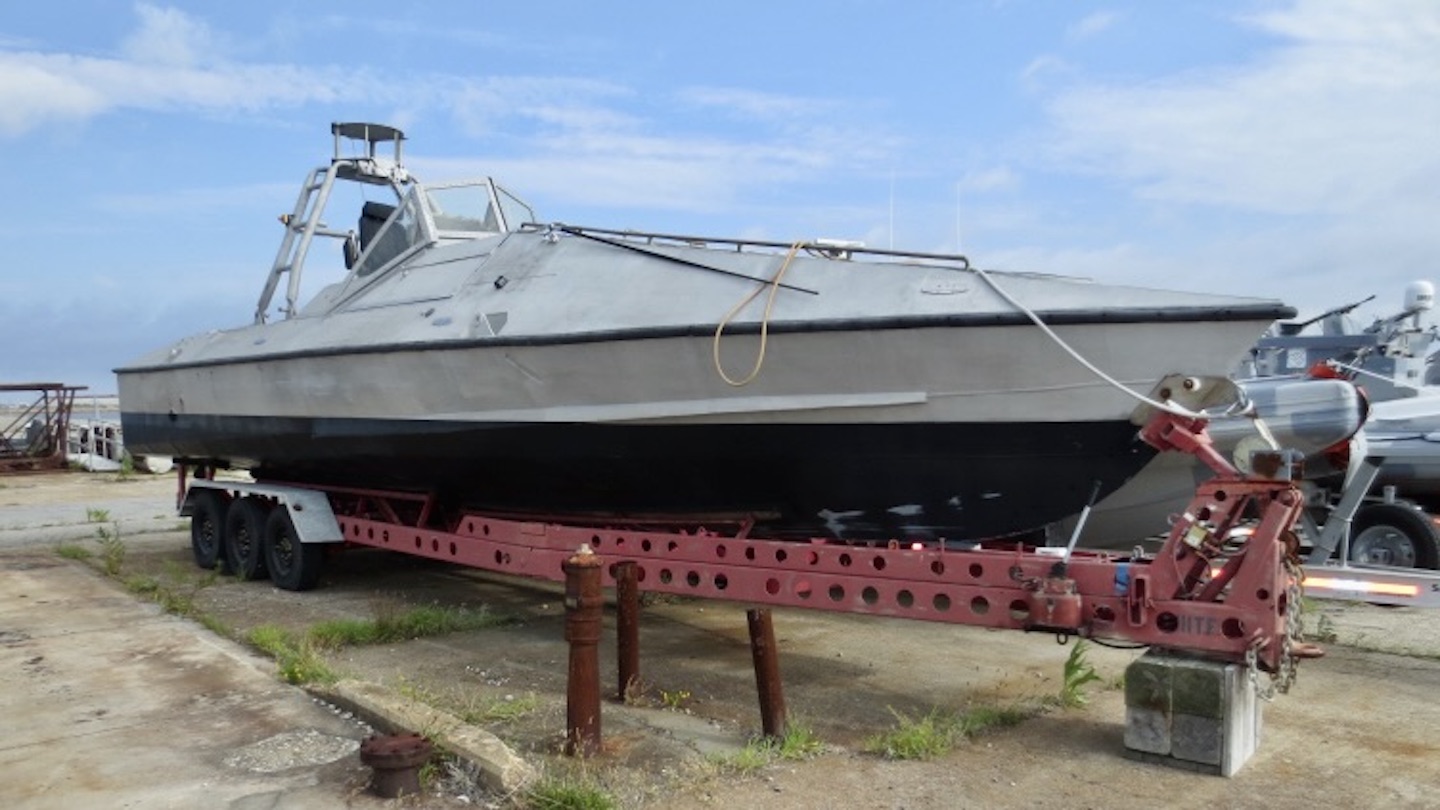If you’re in the market for a new addition to your boat collection, or are looking to get in the game with a pretty unique first-time purchase, you might be interested in this vessel which is currently up for auction. Built in the mid-2000s, in a previous life it served as a testbed for the Navy in exploring how uncrewed surface vessels (USV) could help the service’s Littoral Combat Ships (LCSs) perform a range of missions in littoral waters.
The General Services Administration (GSA) is auctioning the vessel, which is listed under the Navy’s nomenclature of UUSV HTF — which means Unmanned Sea Surface Vehicle Heavy Tow Force. It’s currently being looked after by the Combatant Craft Division of the Naval Surface Warfare Center Carderock Division (NSWC Carderock) in Norfolk, Virginia. The most recent bid on the boat, which has the naval hull registration number 39UC0701, is $15,200 at the time of writing. The exact amount the Navy forked out to acquire the testbed, and its various components, remains unclear.
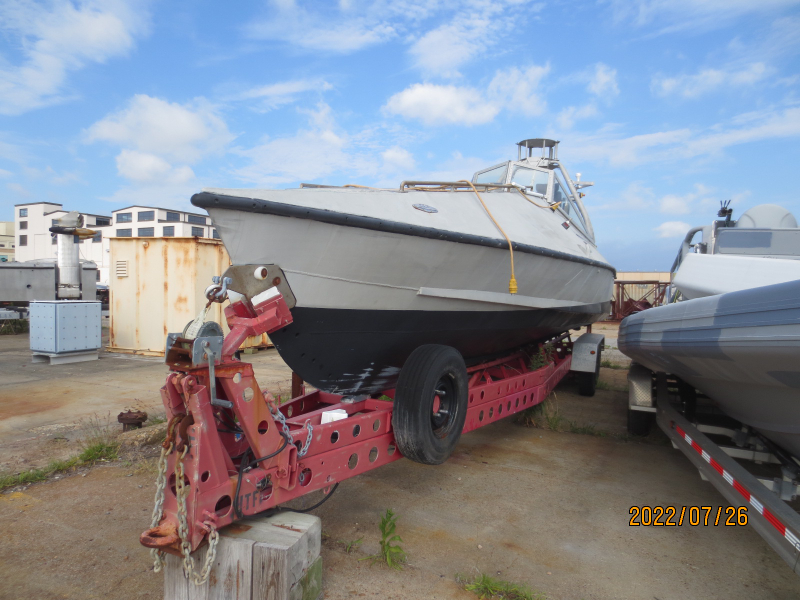

In terms of its specifications, the GSA listing indicates the USSV HTF is approximately 39 feet long and has a maximum beam of just under 10 feet. Its semi-planing monohull is made from aluminum, with shock-mitigating seating for two individuals. In addition, it features an electronics arch, an aft work deck, and a Northern Lights model PX-320C2 generator.


For its propulsion system, the vessel comes equipped with twin inboard Yanmar 6LY2M-STE diesel engines, each capable of 450 horsepower. When used by the Navy, the boat has a stated maximum speed of over 25 knots (just under 29 miles per hour). “Propulsion was reported to be in good condition” at the vessel’s last inspection, according to the listing, “however, the boat has been on land for approximately 5 years, so current condition is unknown.”
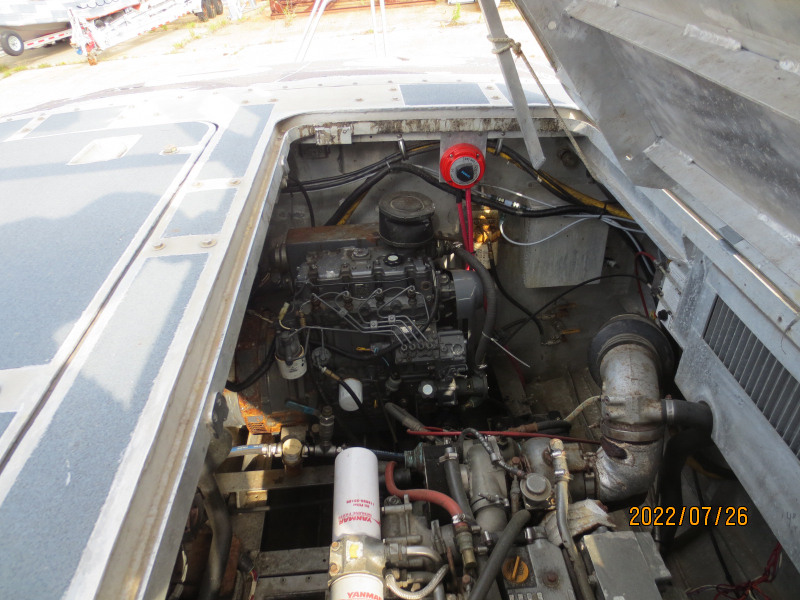
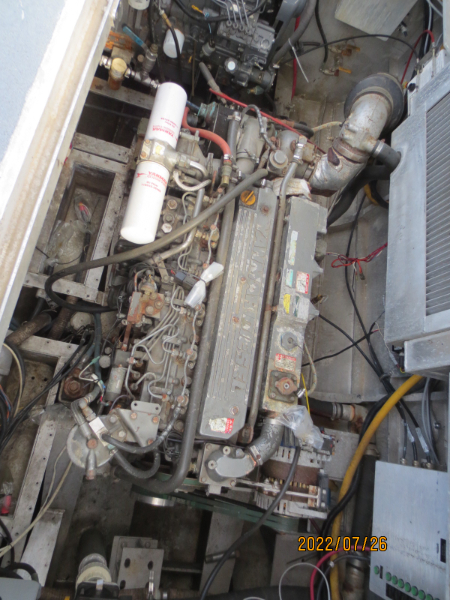
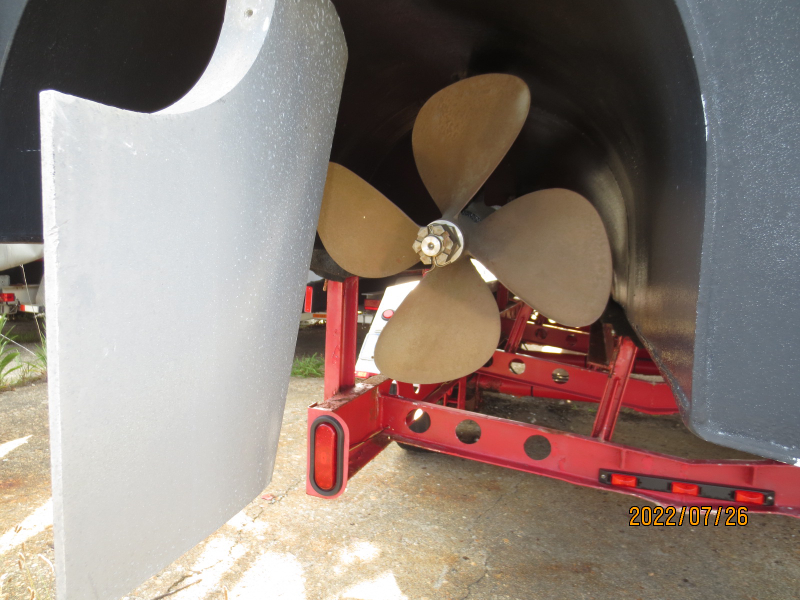
“Inspection [of the vessel] is strongly suggested,” a separate document attached to the listing titled ‘Boat Profile,’ notes in bold. “Individuals are strongly encouraged to conduct their own survey or hire someone to survey the item for them. Hull, mechanical and electrical and systems should be tested/repaired prior to vessel operation,” it further states.
“Electrical systems were not energized and mechanical systems were not rotated during the inspection used to prepare the boat or equipment offered for sale. Repairs may be required to make [it] operational.”
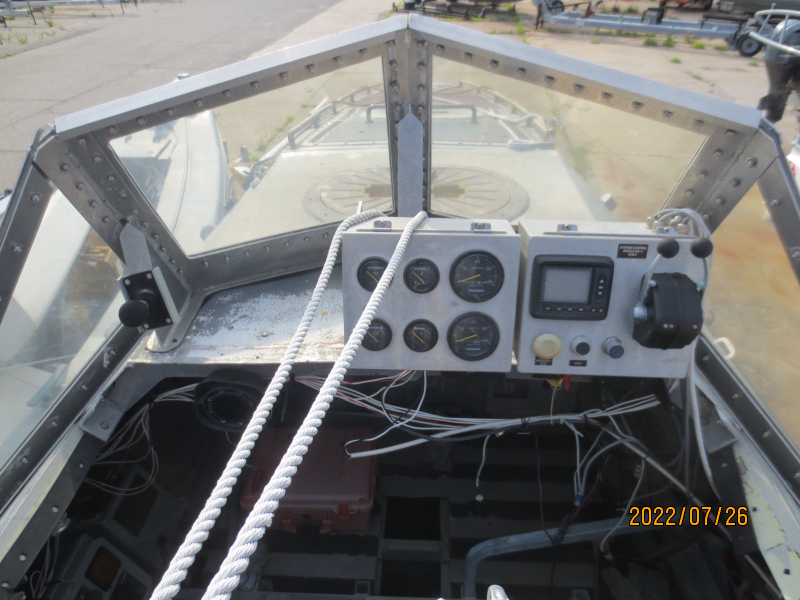
A triple-axle steel trailer for the boat is also included as part of the lot, although, as the listing highlights, it may not be roadworthy.
Successful bidders will be issued a “Purchasers Receipt, a Bill of Sale, and a request for certification of build form, which they will need to send to [the] Naval Surface Warfare Center,” the listing highlights. “A quasi-title will be required from the original purchaser in the event the boat is resold.”
Although the vessel was “configured for unmanned/remote control operation,” the listing notes, it “can be converted back to conventional operation with some work.” So, if you fancy making it your primary fishing boat, or are interested in using it to re-create Roger Moore’s iconic boat chase sequence in the 1973 Bond epic Live and Let Die, you can.
While it may seem somewhat unassuming on first appearance, the vessel is actually a very curious piece of Navy history.
Work on the USSV HTF platform began in 2003, during which time the service’s LCS program was in its early stages of development. From the very start, the Navy intended that both subclasses of its future LCSs — Freedom class and Independence class vessels, the first of which USS Freedom was commissioned in late-2008 — would be capable of performing multiple missions via swappable anti-submarine warfare, surface warfare, and mine countermeasure packages. It was envisaged that employing uncrewed surface vessels (USV) would aid LCSs in their wide-ranging mission sets; performing high-risk operations with no risk to human operators. However, questions remained over whether bespoke USVs should be built, or if crewed platforms adapted for uncrewed operations should be used.
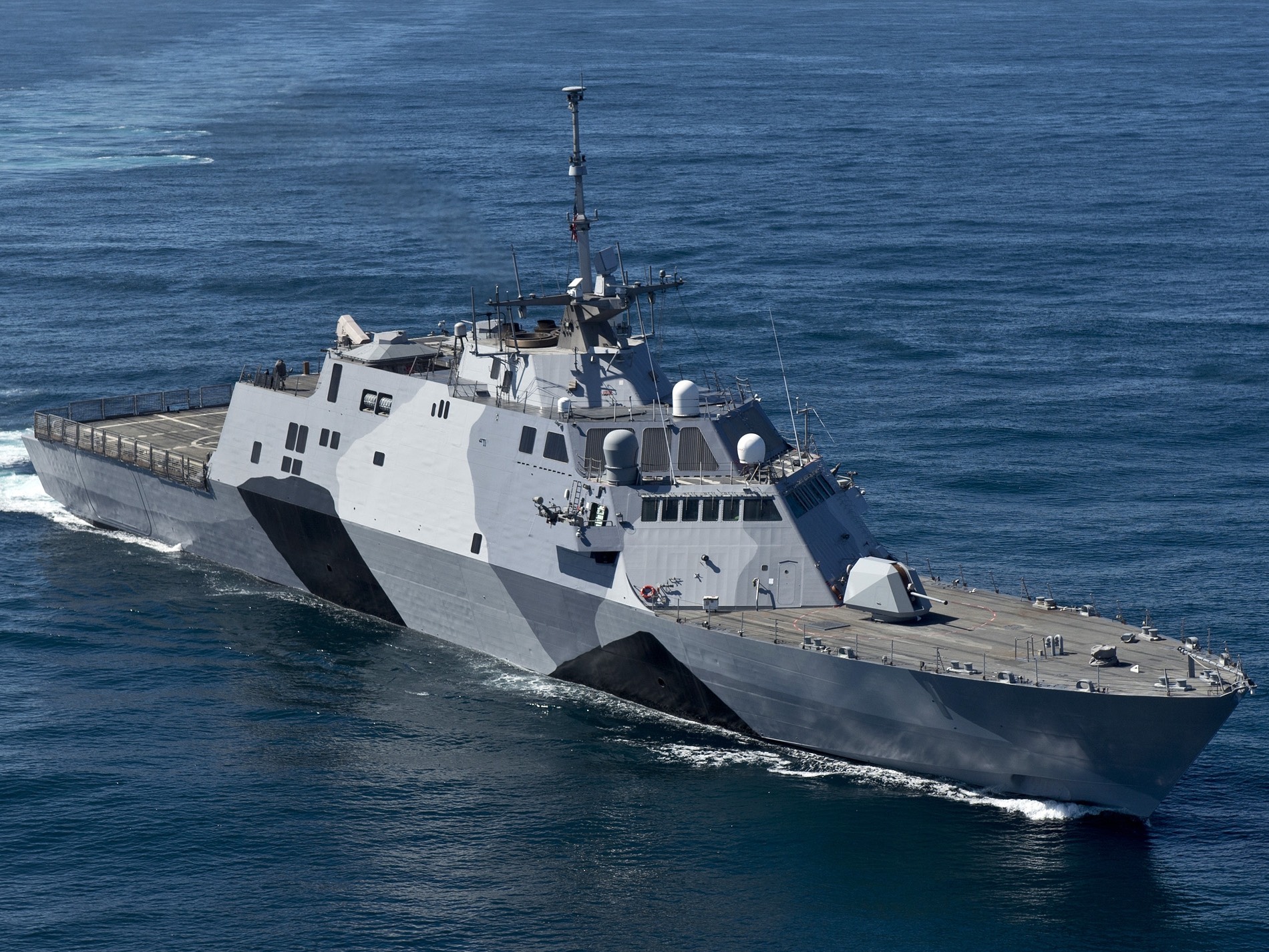

Two USV prototypes were explored by the Navy; one designed for increased towing capabilities (USSV HTF) and one capable of achieving high speeds (USSV HS). The program for those vessels was managed by the Office for Naval Research (ONR). NSWC Carderock designed both USSV HTF and USSV HS, while the Baltimore-based company Maritime Applied Physics Corporation built them.
As the Naval Sea Systems Command (NAVSEA) infographic below highlights, USSV HTF was modeled on the ability to perform a range of missions; with swappable surface warfare (SuW), mine and inshore warfare (MIW), electronic warfare (EW), and anti-submarine warfare (ASW) packages. It was optimized for a high payload capacity and high endurance — with a full load of 18,000 pounds — in order to pull various sensors also developed by the ONR, the exact nature of which remains murky. USVs towing different payloads is something that the Navy has since explored with other vessels distinct from its LCSs.
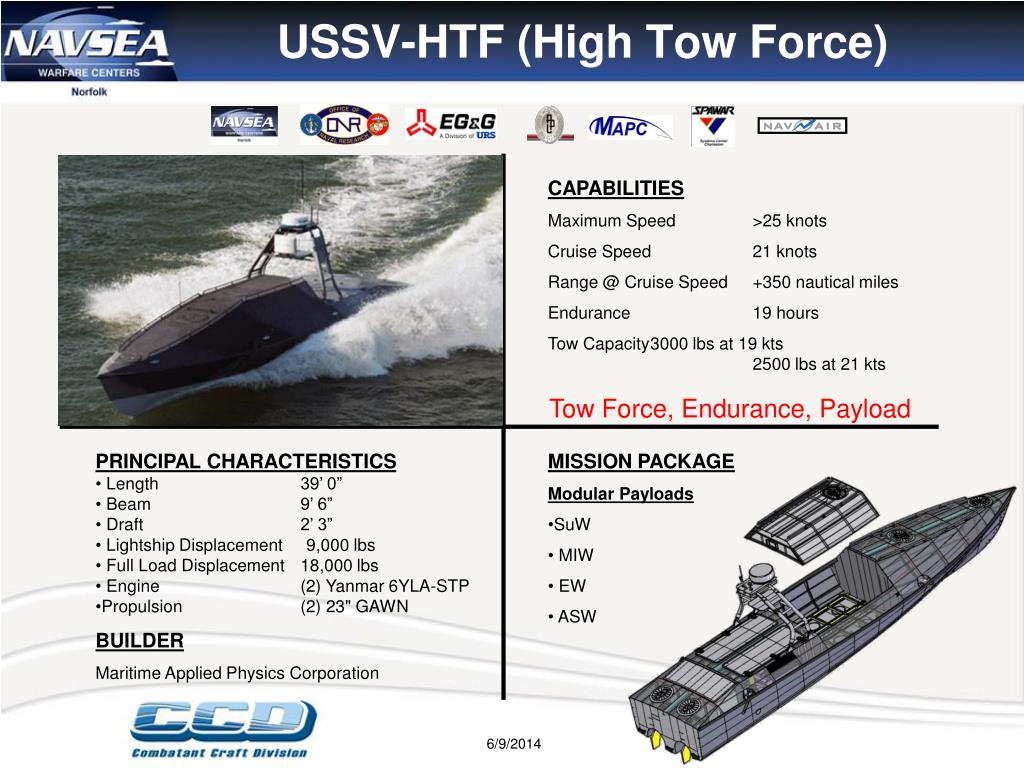
USSV HTF was launched in early-2005, and was sent to the Naval Undersea Warfare Center’s (NUWC) facility at Seneca Lake, New York for testing in February of that year. There, it was subjected to an in-water tow test, which involved a tow drogue measuring its tow force versus speed fully loaded in calm waters for the mine influence mission. The outcome of said test, which can be seen below, revealed that the USSV HTF’s tow capability far exceeded that of crewed rigid hull inflatable boats (RHIBs) converted for uncrewed operations.
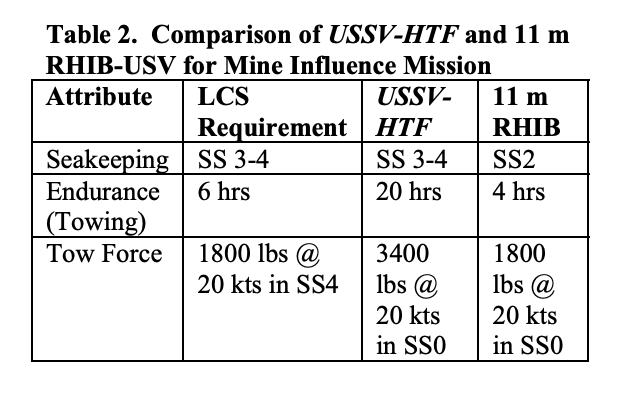
Later, in early-2006, the speedier and slightly shorter USSV HS was launched. Clocking in at 36 feet long, and with a top speed of some 40 knots (just over 46 miles per hour), its ability to move quicker than the USSV HTF came largely as a result of its hydrofoil design, as both prototypes were engineered to use common powerplants and engines. You can read more about the Navy’s history with hydrofoil platforms in this past War Zone piece.
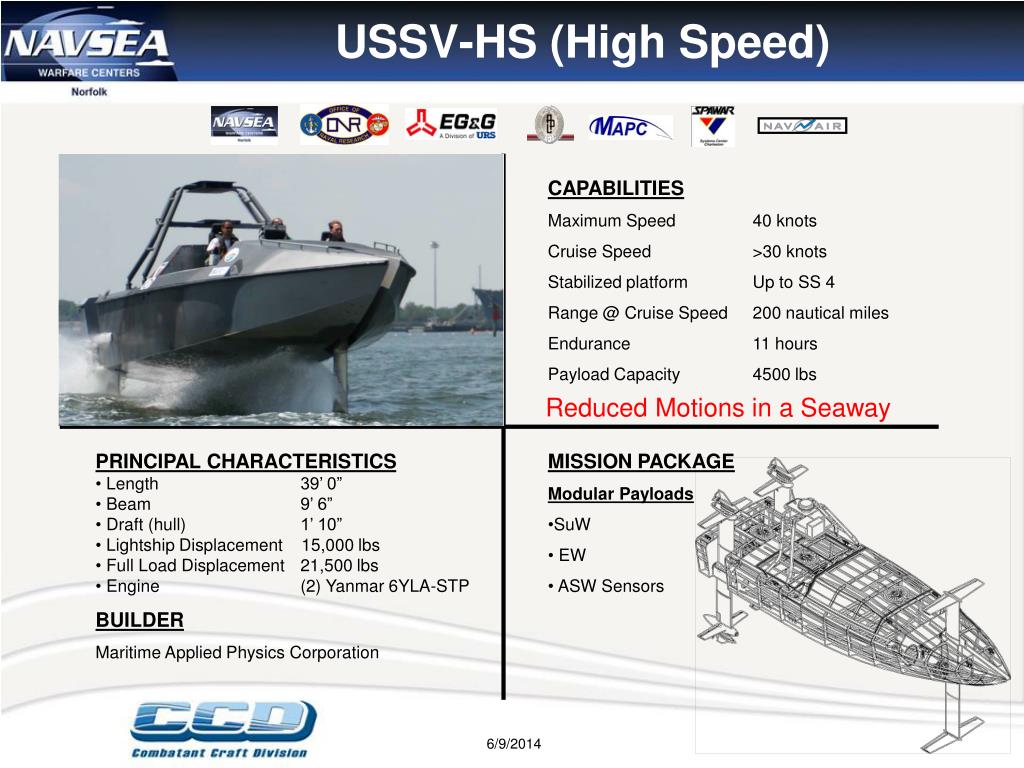
With the two testbeds, the ONR aimed to transition the technologies from both to NAVSEA for use with the LCS program. In the end, the Navy ended up fielding just one type of USV for its LCSs, which was specifically intended to fulfill the mine countermeasures role.
Textron Inc. was selected to build four Mine Countermeasures Unmanned Surface Vehicle (MCM USV), the first of which was delivered to the Navy in 2008 and the last in 2012. These boast a similar length to the USSV HTF, but are capable of speeds closer to the USSV HS of some 35 knots (40 miles per hour). However, more recently the Navy offered Bollinger Shipyards contracts to build additional MCM USVs. In early 2023, the service declared initial operational capability on its entire mine countermeasures mission package.

As we reported earlier this year, only 15 Independence LCSs are set to undertake the mine countermeasures mission. Shifting mission sets have left the Navy with a surplus number of Independence LCSs, and the service plans to sell two vessels within that class via the Foreign Military Sales (FMS) program, alongside four Freedom class vessels. So far, two Independence class vessels and five Freedom class vessels have been decommissioned by the Navy. The LCS program has been beset by numerous problems across both vessel subclasses, which The War Zone has reported on extensively.
USVs of various tiers have become a major focal point for the Navy in recent years, and, in many ways USSV HTF represents an early example of a concept that would go on to become increasingly mainstream for the service.
If you’re interested in snapping up this piece of naval history and adapting it for use on your nearest lake or river, you have until 5:20 P.M. today (Central Time) to do so.
Contact the author: oliver@thewarzone.com
